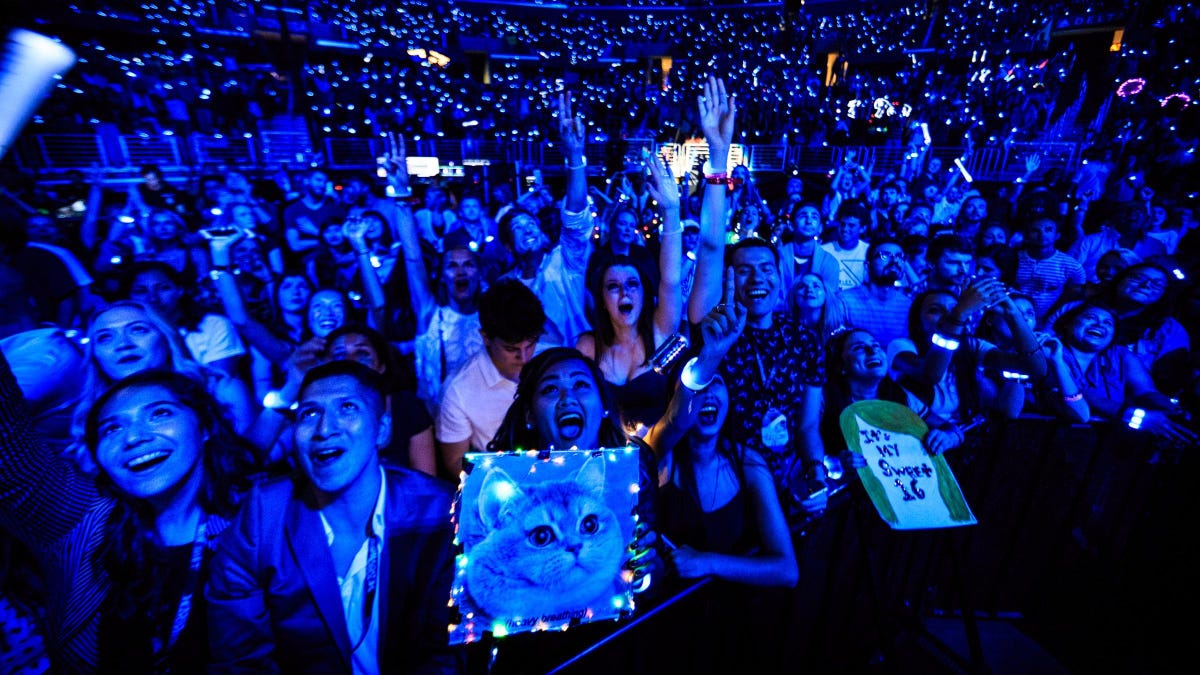Why You Should Wear Wireless Headphones to Your Next Concert

Buzzkills everywhere agree: As fun as it is, going to a loud concert can damage your hearing. Many halls are disgustingly loud, and you may experience hearing loss symptoms as little as five minutes after exposure to the cacophony. But if you frequent live music concerts, your wireless headphones will help protect your delicate eardrums.
What causes hearing loss?
According to the CDC , hearing loss can occur either from a single deafening sound or from repeated exposure to loud sounds. Sound is measured in decibels (dB), and you may start to experience hearing loss symptoms if you frequently encounter sounds above 70 dB, which is about the volume of a running washing machine.
Decibels measure loudness, and sound intensity increases exponentially with a slight gradual increase in dB levels. According to the CDC, sound measured at 20 dB is 10 times more intense than sound at 10 dB. The next time you see a comparison of dB levels on a chart, know that the impact of each additional decibel is significant, and that after a certain point, the risk of hearing loss increases exponentially.
For example, data from the CDC states that more than two hours of exposure to lawnmower sounds (measured at 80-85 dB) puts you at risk of hearing loss. However, hearing loss can occur less than two minutes after someone yells into your ear (110 dB). That’s why it’s best to consider not just the volume of the sound or the environment, but also how long it actually takes to potentially damage your hearing – it’s a much more useful, realistic way to assess your risk.
How loud are the concerts?
According to the CDC, loudness levels in entertainment venues such as rock concerts, bars and nightclubs average between 105 and 110 dB. At this decibel level, you could lose your hearing within five minutes of exposure. Even when you stand far from the speakers in these areas, the noise is still loud enough to damage your hearing.
If you have a smart device that monitors audio levels (such as an Apple Watch), you can control your exposure yourself. You can also use apps like Sound Meter on Android or NIOSH on iPhone.
What You Can Do to Prevent Hearing Loss at Concerts
The best way to prevent hearing loss is to avoid noisy places altogether, but this is not practical advice for live music lovers. If you don’t want to go to places that are too loud, there are several ways you can reduce your risk of hearing loss.
If your main goal is to block out as many sounds as possible, wearing earplugs is the most effective solution for most people: according to a study by Creighton University, properly fitting headphones can block between 15 and 30 dB . You can even buy earplugs made specifically for concerts , designed to reduce dB exposure while preserving the details of the music. While these options won’t reduce overall decibel levels as much as the best earplugs, they’re probably a more practical choice for people who want to go to a concert to really hear the music – if you’re just going to cheer up. pulling out the earplugs anyway, because they muffle the sound too much, they won’t do you any good.
A practical alternative: active noise canceling wireless headphones.
Before you buy special earplugs for concerts, know that you may already have a high-tech alternative: your wireless headphones. For example, Apple’s second-generation AirPods Pro have both an Active Noise Cancellation (ANC) mode and an ” Adaptive Transparency ” mode that reduces any sound above 85dB while maintaining its overall quality. In the latter case, the AirPods will pump the music from the concert but automatically limit the volume once it reaches that threshold, theoretically reducing your chances of hearing damage during the two-hour show.
In tests published by The New York Times Wirecutter, wearing AirPods Pro with ANC turned on has been shown to reduce decibel levels by 23 dB. On the other hand, adaptive transparency reduced the noise level by only 10 dB. The latter won’t take you below that 85 dB threshold, but it will give you some level of protection while maintaining the sound quality of live music. (Even with Pros headphones without any additional adjustments, the room volume is reduced by 8 dB.)
In these tests, the Adaptive Transparency mode didn’t lower the volume enough to be considered CDC “safe” for more than 45 minutes, but it’s definitely better than wearing nothing at all and you’ll still be able to hear all sounds. the music is almost unmuted, if that’s what you need to protect your hearing.
Many other wireless headphones have a similar listening-through mode that lets some sounds through while reducing loud ambient noises. Not every pair of headphones does this well , and if you’re particularly concerned about your hearing while attending concerts but still want to hear your music clearly, use active noise-cancelling headphones. If you find that everything is still too loud for you when using a feature like adaptive transparency mode, you can always turn on noise reduction, but just know that the former will always provide less protection.
Cheaper wireless headphones may come with passive noise isolation, which means that some sounds are muffled due to a good fit between the earpiece and the ear. It’s not as effective as active noise cancellation, but again, it’s better than no noise isolation at all.